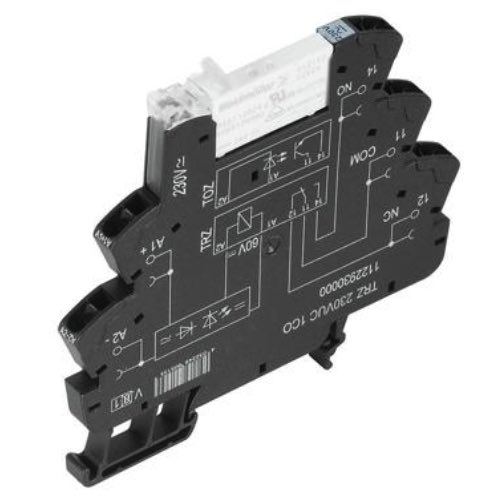Weidmuller Electromechanical Relays

Weidmuller electromechanical relays are a reliable solution for industrial applications that require precise and consistent switching operations. These relays are designed to ensure reliable switching with their positively driven contacts and distinct design. Weidmuller offers an extensive portfolio of electromechanical relays, including solid-state relays, modular relay modules, and pluggable relay modules, catering to a wide application range.
Weidmuller's electromechanical relays feature durable relay modules that are designed for high reliability and long-lasting performance. The use of high-quality components and outstanding manufacturing processes ensures that the relays meet the highest standards of quality and durability. The integrated marker holder and connection markings facilitate easy replacement and wiring times.
More Information about Weidmuller Electromechanical Relays
Weidmuller provides extensive data support for their electromechanical relays, including full data and digital data support. The Weidmuller configurator supports correct dimensioning and appropriate configuration tools, enabling efficient and accurate relay selection. Their technical expertise and valuable tips assist customers in overcoming challenges and achieving cost efficiency in their engineering workflows.
Weidmuller's electromechanical relays also prioritize functional safety and application support. They offer features like a test button, status LED, and safeseries contact extension to ensure user-friendly operation and functional safety. The relays are engineered to meet future market requirements and incorporate permanent innovations to address evolving industry needs.
FAQs
What is a relay module?
A relay module is an electronic device that consists of one or more relays mounted on a single circuit board. It is designed to provide a convenient and compact solution for controlling high-power electrical loads using low-power control signals. The relay module acts as an interface between the controlling device (such as a microcontroller or PLC) and the load being controlled.
What are Weidmuller Termseries relay modules used for?
Weidmuller Termseries relay modules are specifically designed for use in industrial control and automation applications. They are utilized for various purposes, including signal conditioning, monitoring, and control of electrical loads.
What is correct relay dimensioning?
Correct relay dimensioning refers to the process of selecting a relay with the appropriate specifications and capabilities to meet the requirements of a specific application. It involves considering various factors and parameters to ensure that the relay can handle the desired load, voltage, current, and environmental conditions effectively.
Relays: Electromechanical vs Solid State
Electromechanical Relays
Electromechanical relays (EMR) use physical moving parts to achieve the desired functionality. These moving parts include the contacts that switch between the normally open and normally closed stationary contacts in the relay. This movement is made possible by an electromagnet. When power is applied to this magnet, it will act on the movable contact causing the relay to switch. In an EMR, it is common to hear the switching sound that is represented as a “clicking” noise. This audible noise can be helpful when determining the functionality of the relay.
Solid State Relays
Solid state relays (SSR) use a low power, electrical signal to generate an optical semiconductor signal that will transmit and energize an output signal. When this is activated, the input optical signal will act as the switch, allowing a higher voltage signal to pass through the relays output components. The internal circuitry of a SSR is far more complex than an EMR, but there are no physical moving parts.

